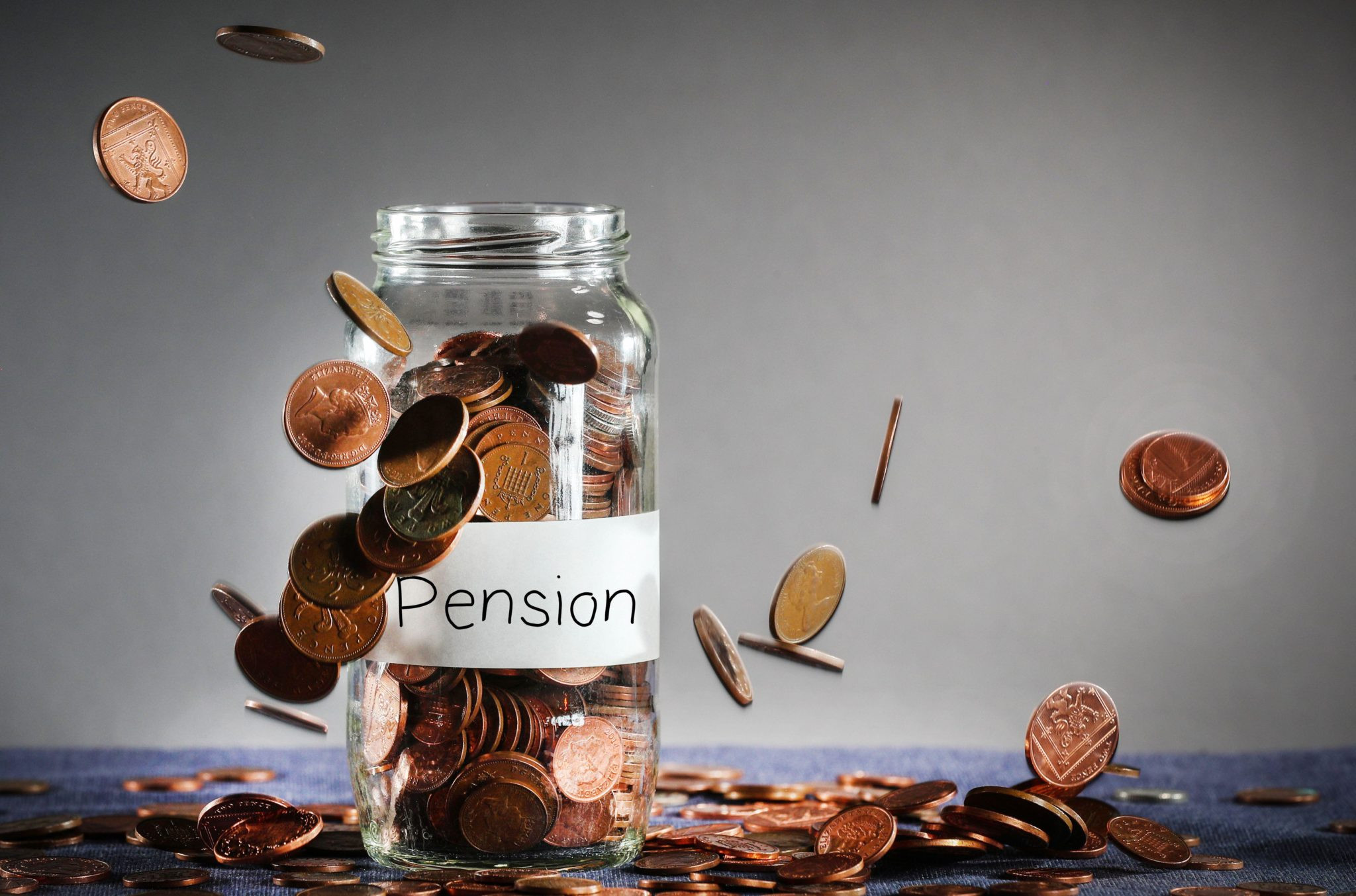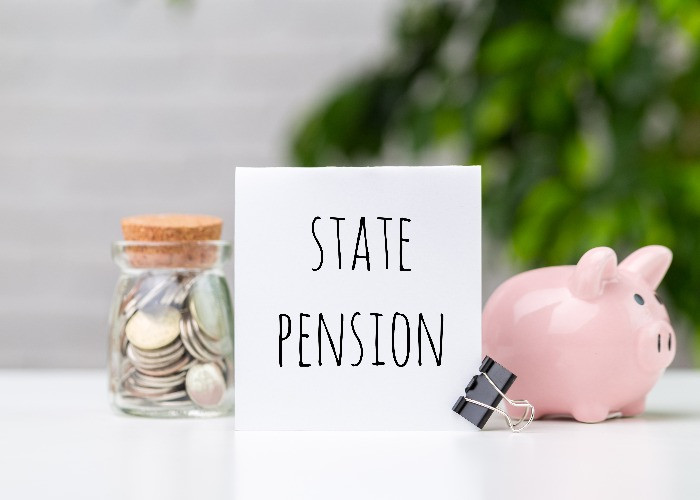Whenever we talk about the state pension, we usually think in terms of the full amount that people can receive. However, it’s fair to say that not everyone receives this. In fact, many don’t and in some cases, people receive far less, and this can have a big impact on our retirement planning.
Recent research from Royal London shows that, of the 3.4 million people currently in receipt of the new state pension, only around half of them get the full amount of £221.20 per week.
Around 150,000 people receive less than £100 per week, and around 17,000 get less than £20 per week.
Although many of these pensioners will also have income from other sources it’s an important reminder not to assume you will get the full state pension or you could end up with a nasty surprise in store.
Your state pension entitlement is based on your national insurance record and generally you need 10 years’ worth to get any state pension and 35 years’ worth to get the full amount.
However, many people have gaps in their record — for instance they may have lived outside the UK or have not worked for a period of time — and this will impact how much state pension they receive.
State Pension Forecast: Your Retirement Lifeline
The important thing to do first and foremost is get a state pension forecast. This will highlight any gaps and you can put a plan in place to fill them. If you find gaps that shouldn’t be there then you can contact the Future Pension Centre.
You may also find that gaps in your national insurance record correspond with times when you would have qualified for a benefit that comes with an automatic national insurance credit. Examples include child benefit, universal credit and jobseeker’s allowance.
If this is the case, then you may be able to backdate a claim and get these credits added so you can boost your pension.
Buying National Insurance Credits: Plugging the Gap
The other option is to buy national insurance credits to plug the gap. You can usually buy credits going back to the previous six tax years but, if you are a man born after 5 April 1951 or a woman born after 5 April 1953, then until April 2025 you can plug gaps going back to 2006.
In return, you will get an extra 1/35th of your pension which works out at around £328 per year. This can be great value for money as you will have made your money back within three years of reaching state pension age.
However, it is really important not to just hand over the money without checking with the Future Pension Centre that you really will benefit.
If you were contracted out for instance, you may find that any top ups you make don’t actually improve your state pension. Contracting out is a feature of the old system where you were allowed to contract out of the state second pension in exchange for you (and your employer) paying less national insurance. However, many people got a top up to their workplace pension so haven’t missed out.
Contracting out has been abolished for several years but it will still be a factor for many people so it’s important to check if you are affected.
Pension Credit: A Safety Net for Low-Income Pensioners
In a similar vein, couples claiming Pension Credit where one person is receiving a disability benefit, will also be granted an extra £81.50 each week (£326 per month). Furthermore, if someone is in receipt of Carer's Allowance, they may qualify for an additional weekly Pension Credit of £45.60.
This extra Pension Credit could also be available to those entitled to Carer's Allowance but are not being paid it, or are receiving it at a lower amount than usual, due to being paid a higher amount by another income-related benefit such as the State Pension - this is often referred to as an underlying entitlement.
Currently, nearly 1.4 million older people across Great Britain, including over 125,000 residing in Scotland, are receiving this means-tested benefit which could provide an average of £3,900 in support during the upcoming year. However, recent figures from the DWP suggest there are still 880,000 eligible pensioners not claiming the benefit they are entitled to.
Understanding Pension Credit Eligibility and Benefits
Pension Credit serves to top up weekly income to a guaranteed minimum level of £218.15 a week for single pensioners or £332.95 for couples. It is a tax-free payment for those who:
- Are over State Pension age and have a low income
- Live in England, Scotland, or Wales
Older people, or their friends and family, can quickly check their eligibility and get an estimate of what they may receive by using the online Pension Credit calculator on GOV. UK here.
Alternatively, pensioners can contact the Pension Credit helpline directly to make a claim on 0800 99 1234 - lines are open 8am to 6pm, Monday to Friday.
Pension Credit: A Gateway to Additional Support
If you're eligible for Pension Credit, you can also receive other forms of assistance:
- Warm Home Discount Scheme: Helps low-income households with heating costs, typically offering a one-off discount of £150 off their energy bill.
- Support for Mortgage Interest (SMI): Provides financial assistance with mortgage interest payments, preventing repossession for those on a low income.
- Council Tax Discounts: Reduces the amount of Council Tax payable, providing financial relief for those struggling to meet the full cost.
- Free TV Licence: Available for over-75s, eliminating the cost of a TV licence and providing free access to broadcast TV.
- Help with NHS Costs: Reduces or removes the cost of NHS charges, such as prescriptions and dental treatment, ensuring access to healthcare services.
Navigating the Pension Credit Application Process
To use the calculator on GOV. UK, you'll need details of:
- Your income and savings
- Your housing costs, including rent, mortgage payments, or service charges
- Your National Insurance number
- Your partner's details, if applicable
If you have a partner, you'll need their details too. You will be presented with a series of multiple-choice questions.
This includes:
- Your date of birth
- Your National Insurance number
- Your income, including wages, pensions, benefits, and savings
- Your housing costs, including rent, mortgage payments, or service charges
- Whether you are a carer
- Whether you have a disability
- Whether you are responsible for a child
Once you've answered these questions, a summary screen displays your responses, allowing you to go back and alter any answers before submitting. The Pension Credit calculator then shows how much benefit you could receive each week.
All you need to do is follow the link to the application page to find out exactly what you will receive from the DWP, including access to other financial support.
There's also an option to print off the answers you provide using the calculator tool to help you fill out the application form more quickly without having to search for the same details again. Try the Pension Credit Calculator for yourself or a family member to ensure you're receiving all the financial support you're entitled to claim.
Who Cannot Use the Pension Credit Calculator?
The calculator cannot be used if you or your partner:
- are deferring your State Pension
- own more than one property
- are self employed
- have housing costs (such as service charges or Crown Tenant rent) which are neither mortgage repayments nor rent covered by Housing Benefit
Applying for Pension Credit: A Step-by-Step Guide
You can begin your application up to four months before you reach State Pension age. You can claim any time after you reach State Pension age but your claim can only be backdated for three months.
This means you can receive up to three months of Pension Credit in your first payment if you were eligible during that period.
You will need:
- your National Insurance number
- information about your income, savings and investments
- your bank account details, if you’re applying by phone or by post
If you’re backdating your claim, you’ll need details of your income, savings and investments on the date you want your claim to start.
State Pension Payment Day: Decoding Your National Insurance Number
The state pension is a benefit paid to anyone in the UK who has enough contributions on their NI record.
The full state pension is worth £221.20 a week, which adds up to £11,502.40 a year.
However, the amount increases every year, thanks to something called the triple lock.
This guarantees that the payment will rise by the highest out of inflation (measured by the Consumer Prices Index), the average increase in wages in the UK, or 2.5%.
To get the money, you need to start claiming your state pension once you reach state pension age.
You can find yours out using the government’s online tool.
If you choose to delay your pension by more than 9 weeks, you’ll increase the amount you get paid.
Your first payment will come within five weeks of you applying for the money, and will cover the full amount you’re owed for that time.
That could mean you get a higher or lower amount than normal.
After that, you should get your full payment every four weeks, and it should always come on the same day of the week.
The actual day you get paid is determined by your National Insurance number, and there’s a clever trick for working out when yours will come.
You need to look at the last two digits, and that will tell you your payment day.
The codes and corresponding days are:
- 00-09: Monday
- 10-19: Tuesday
- 20-29: Wednesday
- 30-39: Thursday
- 40-49: Friday
If you’re not sure what your National Insurance number is, you can find it on documents such as a P60, in your personal tax account online, or in the HMRC app.
You can also use your personal tax account or HMRC app to download a letter that shows your National Insurance number.
Or you can use the government’s online tool here.
Even though the payment day is determined by your NI number, you might be paid earlier if your usual day falls on a bank holiday.
Usually, you’ll get your money on the previous working day if that happens.
Understanding Your State Pension Entitlement
To get any state pension at all, you need to have at least 10 qualifying years on your national insurance record. To get the full amount, you need 35 qualifying years.
A qualifying year is one where you either worked and made national insurance contributions, got national insurance credits (for instance if you have caring responsibilities), or paid voluntary national insurance.
You can get a State Pension forecast to see whether you’re on track to receive the full amount. If you don’t have enough time to get the full 35 years before your state retirement age, you can make voluntary contributions to fill gaps in your record.
You might have gaps if:
- You’ve been unemployed for a while
- You’ve lived abroad
- You’ve been self-employed and haven’t paid enough contributions
- You’ve been on a low income and haven’t paid enough contributions
- You’ve been a carer and haven’t claimed National Insurance Credits
If you do have gaps, your state pension forecast will tell you how much it will cost to pay voluntary contributions, whether you’ll benefit from doing this, and if you can pay online.
National Insurance Credits: A Free Boost to Your Pension
Before you decide to pay, check whether you’re eligible for National Insurance Credits.
These count as qualifying years for your record, but without you having to pay anything.
You typically get them from claiming certain benefits, if you’re ill, unemployed, or have caring responsibilities.
Sometimes you get them automatically, for instance if you claim child benefit (even if you opt not to receive the money), while other times you will have to apply.
You get the credits automatically if you are on:
- Child Benefit: If you’re caring for a child under the age of 12 by registering for Child Benefit, you may be entitled to free National Insurance credits.
- Universal Credit: If you are receiving Universal Credit, you will automatically receive National Insurance credits for any period you are receiving the benefit.
- Jobseeker’s Allowance: If you are claiming Jobseeker’s Allowance, you will automatically receive National Insurance credits for any period you are receiving the benefit.
- Statutory Sick Pay: If you are receiving Statutory Sick Pay, you will automatically receive National Insurance credits for any period you are receiving the benefit.
- Statutory Maternity, Paternity or Adoption Pay: If you are receiving Statutory Maternity, Paternity or Adoption Pay, you will automatically receive National Insurance credits for any period you are receiving the benefit.
- Additional Statutory Paternity Pay: If you are receiving Additional Statutory Paternity Pay, you will automatically receive National Insurance credits for any period you are receiving the benefit.
How to Claim National Insurance Credits
However, there are plenty more ways you can get credits by applying.
For instance, if you’re unemployed and looking for work, but not on Jobseeker’s Allowance, you need to contact your local Jobcentre to claim Class 1 credits.
Meanwhile, if you’re on Statutory Sick Pay or Statutory Maternity, Paternity or Adoption Pay, or Additional Statutory Paternity Pay and will not earn enough to make a qualifying year, you can apply for Class 1 credits.
You need to write to: PT Operations North East England, HM Revenue and Customs, BX9 1AN, United Kingdom.
You need to include your National Insurance number and say when the credits are for and why you’re eligible.
If you claim child benefit, you can transfer the credits to a spouse or partner using form CF411A.
Grandparents and other family members caring for your child can also apply for Specified Adult Childcare Class 3 credits if all they are over 16 but under State Pension age and you agree to transfer the credits.
If you’re caring for one or more sick or disabled person for at least 20 hours a week, and you don’t get Carer’s Allowance, Carer Support Payment or Income Support, you can apply for Class 3 carer’s credits here.
People on Working Tax Credit may get NI credits automatically. Check your record to see if you are getting them, and if not, contact HMRC.
If you’ve done jury service and you’re not self-employed, you can write to HMRC to apply for Class 1 credits. Include your National Insurance number and say when the credits are for and why you’re eligible.
A state pension boost could save UK households as payments fall to under £100 a week for some - but they have been warned the “clock is ticking”. The Department for Work and Pensions (DWP) is paying some state pensioners as little as £10 or £20 a week.
150,000 pensioners face living on less than £100 a week. Sarah Pennells, a consumer finance specialist at Royal London, is calling on people to fill the gaps in their National Insurance record as the “clock is ticking” amid the Cost of Living crisis.
Workers need to have 35 years of National Insurance contributions under their belt to qualify for the full, new state pension which is currently sitting at £221.20 a week. Royal London's research shows that around 150,000 pensioners receive under £100 a week.
Understanding the Discrepancy in State Pensions
Many retirees on the old basic state pension are feeling hard done by as they believe the new state pension offers younger pensioners a better deal. So what's going on?
Today, there are two state pensions.
Anybody who retired before April 6, 2016, gets the old basic state pension. The new state pension applies to those retiring from that date.
There has always been a gap between how much the two pensions pay. That was baked in, right from the start.
On April 6, 2016, the basic state pension paid £6,203.60 a year for those who got the maximum amount. That same year, the full new state pension paid £8,093.80.
In other words, the new state pension paid £1,890.20 more.
Which seems unfair, at first glance. So why did the coalition government, which built the new system, do such a strange thing?
The new state pension was designed to be simpler, in contrast to the basic state pension, which was topped by two types of additional state pension.
These are the state earnings-related pension scheme (Serps) and additional state pension (S2P).
Many on the basic state pension actually got a lot more than £6,203.60 a year once additional state pension was added. Provided they had made sufficient national insurance (NI) contributions during their working lifetime.
Men actually do better on the basic state pension , by and large, than the new one.
But others fall well short. Especially older women.
Women often get a pittance on the basic state pension, because they stopped work to raise families and therefore paid less NI.
Many were dependent on their husband, leaving them in a mess if he died or they got divorced.
Women do a lot better under the new state pension, which is a definite plus.
But men and women who only get the basic state pension, with no additional state pension on top, feel poorly treated.
Especially since the gap between the old and new schemes rises every year and will continue to do so.
The Triple Lock: A Source of Controversy
It's all down to the triple lock, which applies to both the basic and new state pension. This means they both rise each year by either earnings, inflation or 2.5%, whichever is highest.
There's a problem, though.
The new state pension began from a higher starting point. So although the annual percentage increase is the same, what pensioners get in their bank accounts is very different.
Those on the basic state pension feel more aggrieved by the year. For exampley, next April the new state pension will rise by £461, but the old one by just £353.
The gap has widened by another £108 to £2,688.40.
Serps and S2P rise every year, too, helping those on the basic state pension. But in a cruel twist, they don't benefit from the triple lock. They only rise in line with inflation.
So in years when earnings are higher, or inflation is below 2.5%, additional state pension will fall behind, too.
The DWP says the vast majority on the basic state pension get extra income from the additional state pension or if they contracted out, extra occupational or private pension. Many get a combination of the two.
That's a fair point. So not everybody on the basic state pension is unhappy. Many are doing better out of the system.
But many aren't, and reader Richard is right. They're going to feel a little more like second class citizens every year.
The Tories had no intention of changing the system, and nor will Labour's Rachel Reeves. That would only create a new set of winners and losers. It looks like we're stuck with it, for better or worse.
Looking Ahead: A Call for Action
The DWP’s spokesperson said: “Ensuring a better deal for the pensioners of today and tomorrow is a priority for this Government. There are a variety of reasons why some pensioners have a lower state pension – including contracting out and paying less national insurance contributions – which is why we encourage those on the lowest incomes to claim for pension credit, worth on average £3,900 per year.
“Through our commitment to protect the triple lock over 12 million pensioners will benefit, with many expected to see their state pension increase by around a thousand pounds over the next five years.”
It is crucial to understand that the state pension is a vital lifeline for many people during retirement. Being aware of your entitlement and taking action to secure the best possible outcome is essential, especially during times of financial uncertainty. By taking the time to understand the intricacies of the system and maximizing your entitlements, you can ensure a more comfortable and secure retirement. It is also important to advocate for policy changes that ensure fairness and equity within the state pension system, so that everyone enjoys a dignified and financially secure retirement.


















